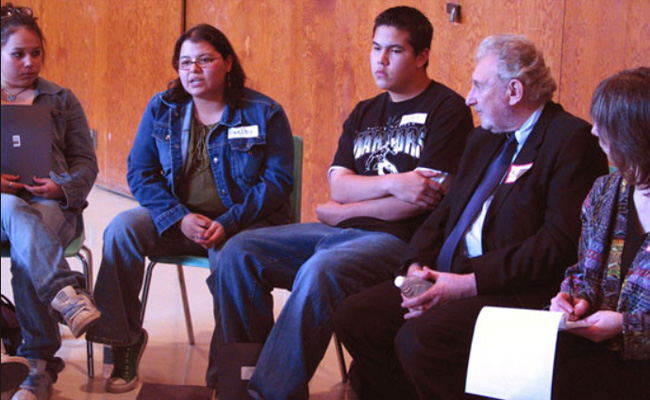Ipperwash Series Part 3: Grassy Narrows confirms the need to implement Linden’s recommendations

The Labour Day long-weekend marked 19 years since the reclamation of Ipperwash Provincial Park, part of Aazhoodena (Stoney Point) ancestral lands. What began as a peaceful demonstration – not unlike numerous other struggles for Indigenous lands across Canada – ended in the shooting death of unarmed Dudley George by an Ontario Provincial Police sniper. This was the first killing of an Indigenous person in a land-rights dispute in Canada since the 19th century.
Respecting the spirit of resistance and resolve embodied by Dudley, this series of articles takes a critical look at post-Ipperwash Ontario.
By Nicole Latulippe
The seeds of discontent were planted in the terms of the 1827 Huron Tract Treaty. The treaty ceded more land to the Crown than the Anishinabek had intended, reserving less than one percent of over two million acres of traditional territory.
The 1% reserved for the exclusive use and occupation of Stoney Point peoples was eventually appropriated too, compounding the poverty, anger, and frustration associated with the loss of access to vast traditional territories.
This is key.
Ipperwash emphasized that First Nations view treaties as agreements to share traditional territories, those land extending well beyond reserve boundaries.
Justice Sidney Linden, commissioner of the Ipperwash Inquiry, explained: “virtually all of the treaties were made with the assurance to the First Nation that its people could continue to sustain themselves on their off-reserve traditional lands”. It was rarely set down in the written treaty, but government officials frequently recorded an oral promise made to First Nations of continued access to traditional lands, a crucial condition of their consent to the treaties.
First Nations continued to have access to their traditional lands, both for economic purposes and as places to live, for a considerable number of years after agreeing to land cession treaties. But, Linden charged, “as the frontier of European settlement steadily advanced, they found themselves pushed onto reserves and excluded, by law and policy, from sharing in their traditional lands”.
Progressive dispossession and exclusion of First Nations from land use planning, resource management, and the economic benefits of development has left them, in the words of Anishinaabe legal scholar John Borrows, submerged and invisible in their own land.
Thus, conflicts between the Crown and First Nations are usually disputes over the meaning of land and jurisdiction of natural resources. Oka, Burnt Church, Temagami, Grassy Narrows, the “War in the Woods”, and Big Trout Lake (KI) are some of the longest and most well known.
To avoid future situations like Ipperwash, Linden aimed to correct a convenient misconception; traditional lands were neither “lost” nor “surrendered”. Every treaty in Ontario supported the expectation that lands outside of reserves would be shared. As the foundation of settlement, treaties continue to carry the full force of law. In the 2007 Report of the Ipperwash Inquiry Linden recommended that the provincial government work with First Nations to support the inclusion of Aboriginal rights and interests in the management of natural resources in Ontario. The legal duty of government to consult and accommodate, resource revenue sharing, and co-management agreements were included in his recommendations.
Yet, the recent Grassy Narrows decision reveals a business as usual approach in Ontario. Anishinaabe scholar Hayden King writes that in Grassy Narrows v. Ontario, the Supreme Court reaffirmed the putative power of the province to violate treaties. The decision was guided by an assumption of provincial “ownership” of lands, widening the gulf between conflicting Crown-First Nations treaty interpretations. Ignoring Ipperwash, the decision rested on a one-sided understanding of history, including an exclusively textual reading of treaties and no consideration of Ontario’s past failure to minimize harm to First Nations.
The decision still requires government to meaningfully consult First Nations when contemplating any action that might impact Aboriginal or treaty rights, but it did not rule on whether past clear-cut logging had violated treaty rights or whether government had met its responsibilities under Treaty 3. Past hydro damming, flooding and relocation, mercury dumping, and clear-cut logging have put the ability to exercise treaty rights in extreme peril, suggesting that the province has not met its obligations.
————–
To learn more about the events surrounding Ipperwash Park, visit http://www.anishinabek.ca/ipperwash.asp
Nicole Latulippe is a PhD Candidate in the Department of Geography at the University of Toronto. In partnership with Nipissing First Nation, her dissertation research is on the Lake Nipissing fishery, Indigenous knowledge and governance systems, and the treaty relationship. Formerly, she worked with the Union of Ontario Indians on the Ipperwash implementation process.


